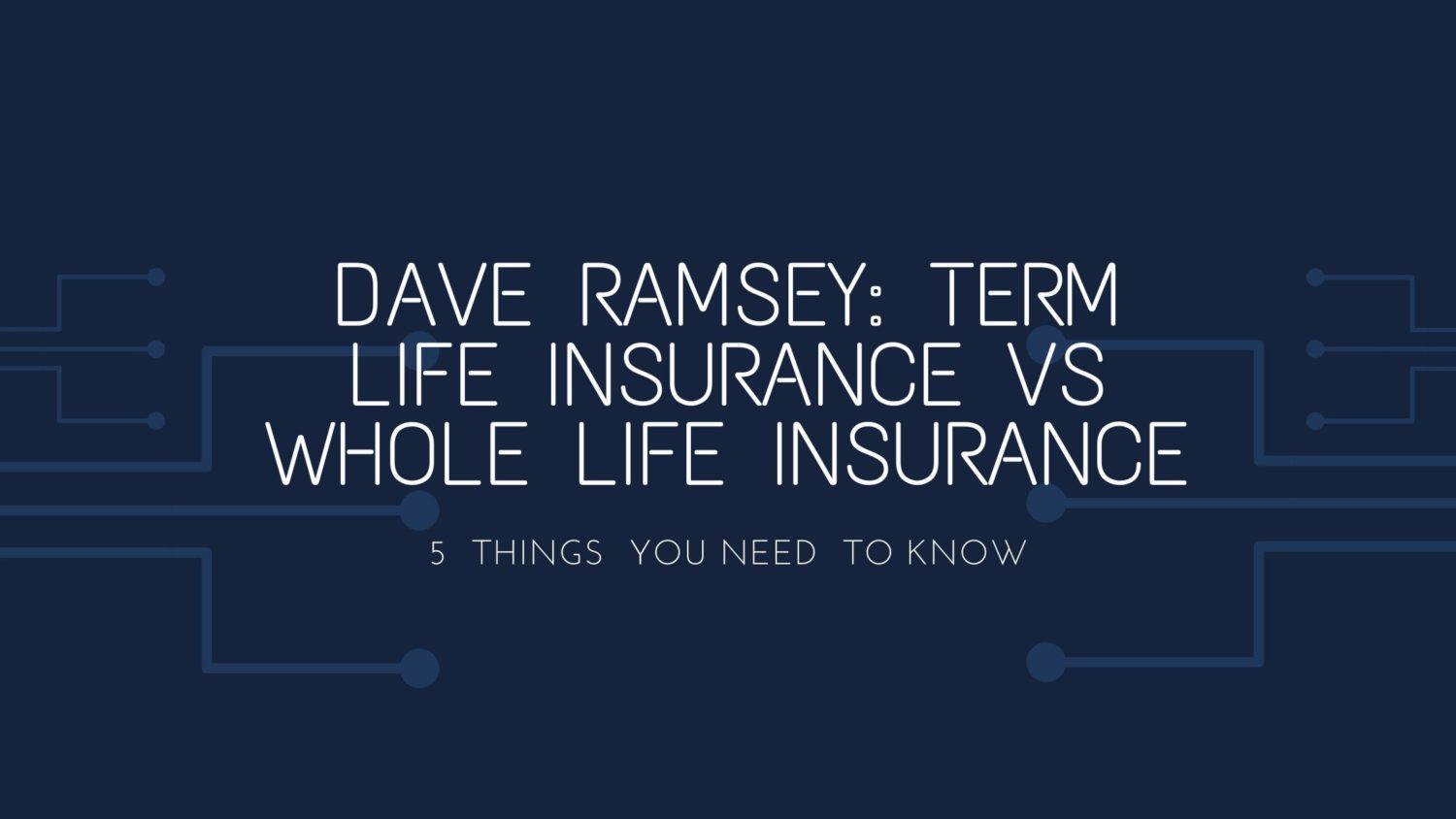Home>Finance>How Long Is The Typical Free Look Period For Long-Term Care Insurance Policies?


Finance
How Long Is The Typical Free Look Period For Long-Term Care Insurance Policies?
Modified: December 29, 2023
Discover the typical free look period for long-term care insurance policies! Gain peace of mind knowing your finances are protected.
(Many of the links in this article redirect to a specific reviewed product. Your purchase of these products through affiliate links helps to generate commission for LiveWell, at no extra cost. Learn more)
Table of Contents
- Introduction
- What is a Free Look Period?
- Importance of a Free Look Period
- Legal Requirements for the Free Look Period
- How Long is the Free Look Period for Long-Term Care Insurance Policies?
- Factors Affecting the Length of the Free Look Period
- How to Utilize the Free Look Period?
- Benefits of Using the Free Look Period
- Conclusion
Introduction
When purchasing a long-term care insurance policy, it is essential to carefully review the terms and conditions before committing to the coverage. While the insurance company may provide a detailed policy document, you might still have lingering concerns or questions about the coverage.
This is where the “free look period” becomes crucial. The free look period allows policyholders to review their insurance policy after purchasing it and make an informed decision. During this period, policyholders have the opportunity to cancel the policy without any penalties or financial consequences.
The purpose of the free look period is to give policyholders a chance to thoroughly evaluate their coverage and determine if it meets their needs and expectations. It offers a grace period that allows individuals to reconsider their decision and make changes, ensuring they are comfortable with the terms and conditions of the policy.
In this article, we will focus on long-term care insurance policies and explore the typical duration of the free look period. We will also discuss the importance of the free look period, the legal requirements surrounding it, and how policyholders can make the most of this opportunity.
What is a Free Look Period?
A free look period is a timeframe provided by insurance companies during which policyholders can review the terms and conditions of their insurance policy and decide whether to keep it or cancel it without any financial penalties. It is essentially a “try before you commit” period that allows individuals to thoroughly evaluate their coverage and make an informed decision about whether the policy meets their needs.
During the free look period, policyholders have the opportunity to carefully review the policy document, including the coverage limits, exclusions, premiums, and any other terms and conditions. They can also consult with a financial advisor or insurance professional to ensure they fully understand the implications of the policy.
The duration of the free look period varies depending on the type of insurance policy and the jurisdiction. In most cases, it ranges from 10 to 30 days, but it can be longer for certain types of policies or in specific states. It is crucial to note that the free look period starts from the date the policy is received, not from the date of purchase.
During the free look period, policyholders have the right to cancel the policy and receive a full refund of the premium payments made. The refund is typically issued within a specific timeframe, such as 30 days from the date of cancellation.
It is important to understand that the free look period is not a loophole to obtain temporary coverage without the intention of keeping the policy. It is intended to protect policyholders from purchasing a policy that does not meet their expectations or needs. Therefore, it is crucial to use this period to thoroughly evaluate the policy and make an informed decision.
The free look period is a valuable consumer protection feature that allows individuals to safeguard their interests and ensure they are comfortable with the insurance coverage they are purchasing. It provides peace of mind and reassurance knowing that policyholders have the opportunity to carefully consider their options before committing to a long-term financial agreement.
Importance of a Free Look Period
The free look period is an essential component of any insurance policy, including long-term care insurance. It offers several benefits to policyholders, providing them with the necessary time and flexibility to make an informed decision about their coverage. Here are some key reasons why the free look period holds significant importance:
- Evaluating Suitability: The free look period allows policyholders to thoroughly review the terms and conditions of the policy and determine if it aligns with their specific needs and circumstances. It provides an opportunity to ensure that the coverage purchased adequately addresses potential risks and potential future care needs.
- Understanding Coverage: Insurance policies can be complex documents filled with industry jargon and technical language. The free look period gives policyholders the chance to seek clarification on any unclear or confusing aspects of the policy. This ensures that policyholders have a clear understanding of what their insurance will and will not cover.
- Comparing Options: The free look period allows policyholders to compare multiple insurance policies from different companies. They can obtain quotes, evaluate the terms, and make an informed decision based on the coverage that best suits their needs and budget. This flexibility promotes competition among insurance providers and empowers policyholders to make the best choices.
- Seeking Professional Guidance: Policyholders can take advantage of the free look period to consult with insurance professionals, financial advisors, or legal experts. These professionals can assess the policy and provide valuable guidance, helping policyholders make informed decisions and avoid potential pitfalls.
- Addressing Concerns: The free look period allows policyholders to address any concerns or reservations they may have about the policy. They can question the insurance provider about specific provisions, seek clarification, or request potential modifications that better meet their needs. This opportunity for open communication establishes trust between the policyholder and the insurance company.
The importance of the free look period cannot be overstated. It is a valuable tool that empowers policyholders to make educated decisions about their long-term care insurance coverage. Policyholders should use this period wisely, take advantage of the benefits it offers, and ensure their chosen policy aligns with their future care needs and financial goals.
Legal Requirements for the Free Look Period
The free look period is not just a courtesy provided by insurance companies but is often a legal requirement mandated by regulatory authorities. These requirements ensure consumer protection and give policyholders a fair opportunity to review and cancel their insurance policies if needed. While the duration of the free look period can vary based on the type of insurance and jurisdiction, there are some common legal requirements that exist:
- Mandatory Minimum Duration: In many jurisdictions, there is a minimum duration for the free look period that insurance companies must comply with. This is typically specified by law and can range from 10 to 30 days. However, it is important to note that some policies, such as group insurance, may have different requirements.
- Clear Disclosure: Insurance companies are required to provide clear and comprehensive information about the free look period in their policy documents. This includes explaining the duration of the free look period, instructions on how to cancel, and the process for obtaining a refund of premiums paid.
- Refund of Premiums: When a policy is canceled during the free look period, insurance companies are generally obligated to provide a full refund of any premiums paid. The refund should be issued in a timely manner, typically within 30 days from the cancellation request.
- Non-Waiver Clause: Insurance policies often include a non-waiver clause, which states that the policyholder cannot waive their right to the free look period. This protects the policyholder from inadvertently forfeiting their right to cancel during this period.
- Proof of Notice: Insurance companies may require policyholders to provide proof that they have sent a cancellation notice within the free look period. This is to ensure that the policyholder has fulfilled their obligation to notify the company of their intent to cancel.
It is essential for policyholders to familiarize themselves with the legal requirements for the free look period specific to their jurisdiction. Understanding the rights and protections offered by these requirements can help policyholders make informed decisions and exercise their options effectively.
It is worth noting that there may be variations in the legal requirements for the free look period based on the type of insurance policy and the jurisdiction. Therefore, it is recommended to consult local insurance regulations or seek professional advice to ensure compliance with the specific requirements applicable to your situation.
How Long is the Free Look Period for Long-Term Care Insurance Policies?
The duration of the free look period for long-term care insurance policies can vary depending on the insurance company and the jurisdiction. While there is no universal standard, it is common for the free look period to range from 30 to 60 days for long-term care insurance policies.
However, it is important to note that the length of the free look period may differ based on the state in which the policy is issued. Some states may have specific regulations that require a longer free look period or provide additional consumer protection provisions.
When considering long-term care insurance, it is crucial to carefully review the terms and conditions of the policy to determine the duration of the free look period. This information should be clearly stated in the policy document provided by the insurance company. The free look period typically begins from the date the policy is received, not the date of purchase.
It is crucial to utilize the free look period effectively. Take this time to thoroughly review the policy, assess the coverage and benefits, and compare it with other available options. Seeking professional guidance, such as consulting with a financial advisor or insurance expert, can also provide valuable insights during this evaluation period.
If, during the free look period, you decide that the long-term care insurance policy does not meet your needs or expectations, you have the right to cancel the policy. It is important to follow the specific cancellation procedures outlined by the insurance company to ensure a smooth and timely cancellation process.
By understanding the duration of the free look period for long-term care insurance policies and utilizing this period effectively, you can make an informed decision about your coverage and ensure that it aligns with your long-term care needs and financial goals.
Factors Affecting the Length of the Free Look Period
The length of the free look period for insurance policies, including long-term care insurance, can be influenced by various factors. While the specific duration is typically determined by the insurance company and the jurisdiction, there are certain factors that can impact how long the free look period lasts. Here are some key factors to consider:
- Regulatory Requirements: The laws and regulations of each jurisdiction play a significant role in determining the duration of the free look period. Some states or countries may have specific requirements that mandate a minimum length for the free look period, ensuring consumer protection.
- Type of Insurance Policy: The type of insurance policy can also affect the length of the free look period. Long-term care insurance policies, which cover potential future care needs, often have longer free look periods compared to other types of insurance policies. This is because long-term care insurance is a significant financial commitment that requires careful evaluation.
- Insurance Company Policy: Insurance companies may have their own internal policies regarding the duration of the free look period. While they must comply with regulatory requirements, some companies may choose to offer a longer free look period as a customer service initiative or a competitive advantage.
- State-Specific Regulations: Different states within a country can have varying laws and regulations regarding the free look period. Some states may have specific provisions that require a longer free look period or additional consumer protection measures.
- Policyholder’s Age and Health: In some cases, the age or health of the policyholder may play a role in the length of the free look period. Insurance companies may offer extended free look periods for older individuals or those with pre-existing health conditions to allow for more thorough evaluation given the potential higher risks associated with long-term care.
It is essential for potential policyholders to carefully review the terms and conditions of the insurance policy to determine the specific duration of the free look period. This information should be clearly stated in the policy document or provided by the insurance company when purchasing the policy.
Understanding the factors that can influence the length of the free look period can help you make an informed decision when choosing a long-term care insurance policy. By taking advantage of this period, you can carefully evaluate the coverage and ensure it meets your needs and expectations.
How to Utilize the Free Look Period?
The free look period provides an important opportunity for policyholders to carefully evaluate their insurance policy, including long-term care insurance. Here are some key steps to effectively utilize the free look period:
- Review the Policy: Take the time to thoroughly review the entire policy document, paying attention to the coverage limits, exclusions, and any other terms and conditions. Make sure you understand what is covered and what is not, as well as any limitations or restrictions that may apply.
- Seek Professional Advice: Consider consulting with a financial advisor or an insurance expert to gain a better understanding of the policy and its implications. They can provide insights, answer questions, and help you assess whether the policy aligns with your long-term care needs and financial goals.
- Compare with Other Policies: If you have obtained quotes for multiple long-term care insurance policies, use the free look period to compare the coverage, benefits, and premiums. Evaluate how each policy addresses your specific needs and determine which one offers the best value for your situation.
- Ask Questions: If there are any uncertainties or ambiguities about the policy, reach out to the insurance company for clarification. Ask specific questions about the coverage, claims process, renewal options, and any other concerns you may have. Clearing up any doubts can help you make an informed decision.
- Consider Future Needs: Think about your long-term care needs and financial circumstances. Assess whether the policy adequately addresses potential risks and aligns with your future care requirements. Consider factors such as inflation protection, the level of care coverage, and the duration of coverage to ensure it meets your expectations.
- Make a Decision: Based on your evaluation and comparison, make a decision on whether to keep or cancel the insurance policy. If you decide to cancel, it is crucial to follow the specific cancellation procedures outlined by the insurance company to ensure a smooth process and to secure a refund of any premiums paid.
It is important to remember that the free look period is a valuable opportunity to carefully assess your long-term care insurance policy. Take advantage of this time to gather necessary information, seek professional guidance, and make an informed decision that aligns with your individual needs and circumstances.
Remember, the purpose of the free look period is to ensure that you have peace of mind and confidence in your coverage. Use this period wisely to evaluate whether the policy meets your expectations and offers the protection you desire in the long term.
Benefits of Using the Free Look Period
The free look period offers several benefits to policyholders, allowing them to make an informed decision about their insurance coverage. Here are some key advantages of utilizing the free look period:
- Evaluating Coverage Suitability: The free look period provides policyholders with the opportunity to thoroughly review the insurance policy and assess its suitability to their specific needs. It allows individuals to determine if the coverage adequately addresses their long-term care requirements and aligns with their financial goals.
- Clarifying Policy Terms and Conditions: Insurance policies can be complex documents, filled with technical jargon and industry-specific terminology. The free look period gives policyholders the chance to seek clarification on any unclear or confusing aspects of the policy. This promotes a clear understanding of the coverage, ensuring that there are no surprises down the line.
- Comparing Options: The free look period allows policyholders to compare multiple insurance policies from different companies. It enables individuals to obtain quotes, evaluate the terms, and make an informed decision based on coverage, benefits, and premium costs. This ensures that policyholders can choose the best long-term care insurance policy for their specific needs.
- Peace of Mind: By utilizing the free look period, policyholders can be confident in their insurance purchase. It provides peace of mind knowing that there is a safety net to reconsider the decision if any concerns or doubts arise. This reassurance allows individuals to move forward with their policy knowing they have taken the time to carefully evaluate their options.
- Avoiding Costly Errors: Rushing into a long-term care insurance policy without careful evaluation can lead to costly mistakes. The free look period prevents policyholders from being locked into a policy that does not meet their requirements or expectations. It provides a valuable opportunity to catch any errors or discrepancies before they become financially burdensome.
- Protection from Unethical Practices: The free look period serves as a safeguard against unscrupulous practices. It ensures that policyholders have recourse in case of deceptive sales tactics or misleading information. This protection promotes transparency and fairness in the insurance industry.
By utilizing the free look period, policyholders can make informed decisions about their long-term care insurance coverage. It empowers individuals to evaluate the policy, seek clarification, compare options, and ensure that the chosen coverage aligns with their needs and financial objectives. This valuable grace period promotes consumer protection, peace of mind, and confidence in their insurance investment.
Conclusion
The free look period is an essential aspect of long-term care insurance policies. This grace period allows policyholders to review and assess their coverage, ensuring that it meets their individual needs and expectations. Understanding the importance and benefits of the free look period can help policyholders make informed decisions and avoid costly mistakes.
During the free look period, policyholders have the opportunity to carefully review the policy, seek professional advice, compare options, and address any concerns or questions they may have. This period empowers individuals to make changes to their coverage or cancel the policy altogether without incurring any financial penalties.
Utilizing the free look period wisely is crucial. It allows individuals to assess the suitability of the policy, clarify any unclear terms or conditions, compare different insurance options, and ultimately make a decision that provides the desired protection and peace of mind in the long term.
By taking advantage of the free look period, policyholders can avoid potential pitfalls, ensure their coverage aligns with their needs, and establish confidence in their long-term care insurance investment. It is important to remember that the free look period is a valuable consumer protection feature that should be used effectively to evaluate and make informed decisions about insurance coverage.
If you have recently purchased a long-term care insurance policy, make sure to familiarize yourself with the specific free look period duration outlined in your policy document. Take the time to thoroughly review the terms and conditions, seek professional guidance if needed, and take advantage of this grace period to ensure that your policy meets your individual needs and provides the necessary protection for your long-term care requirements.














